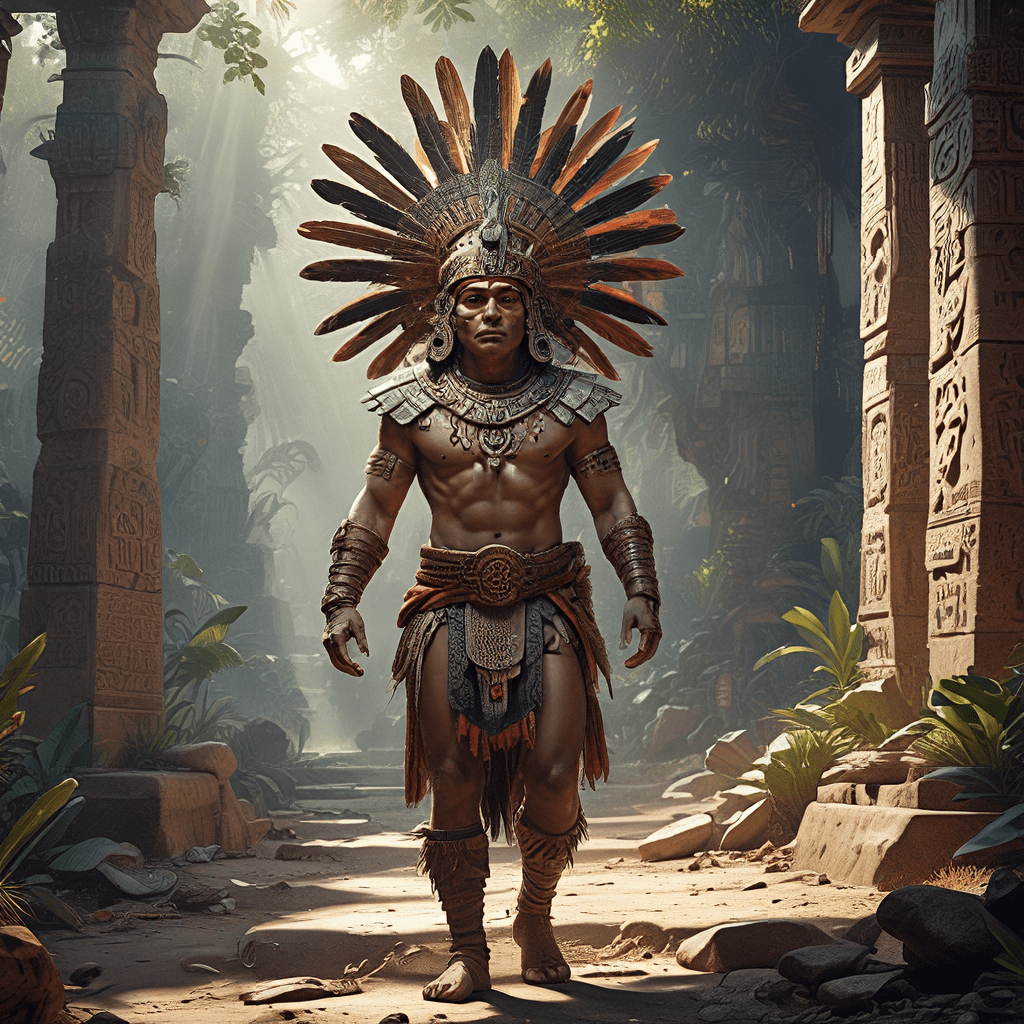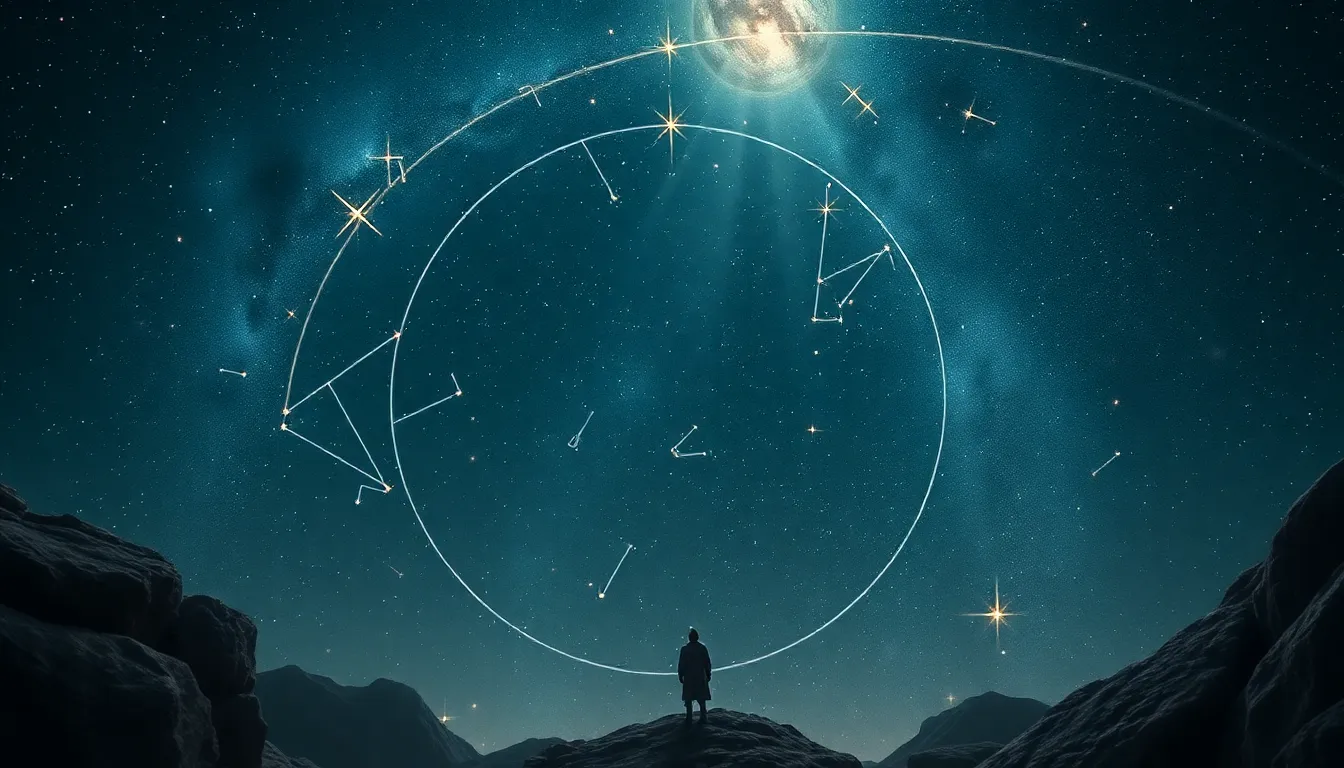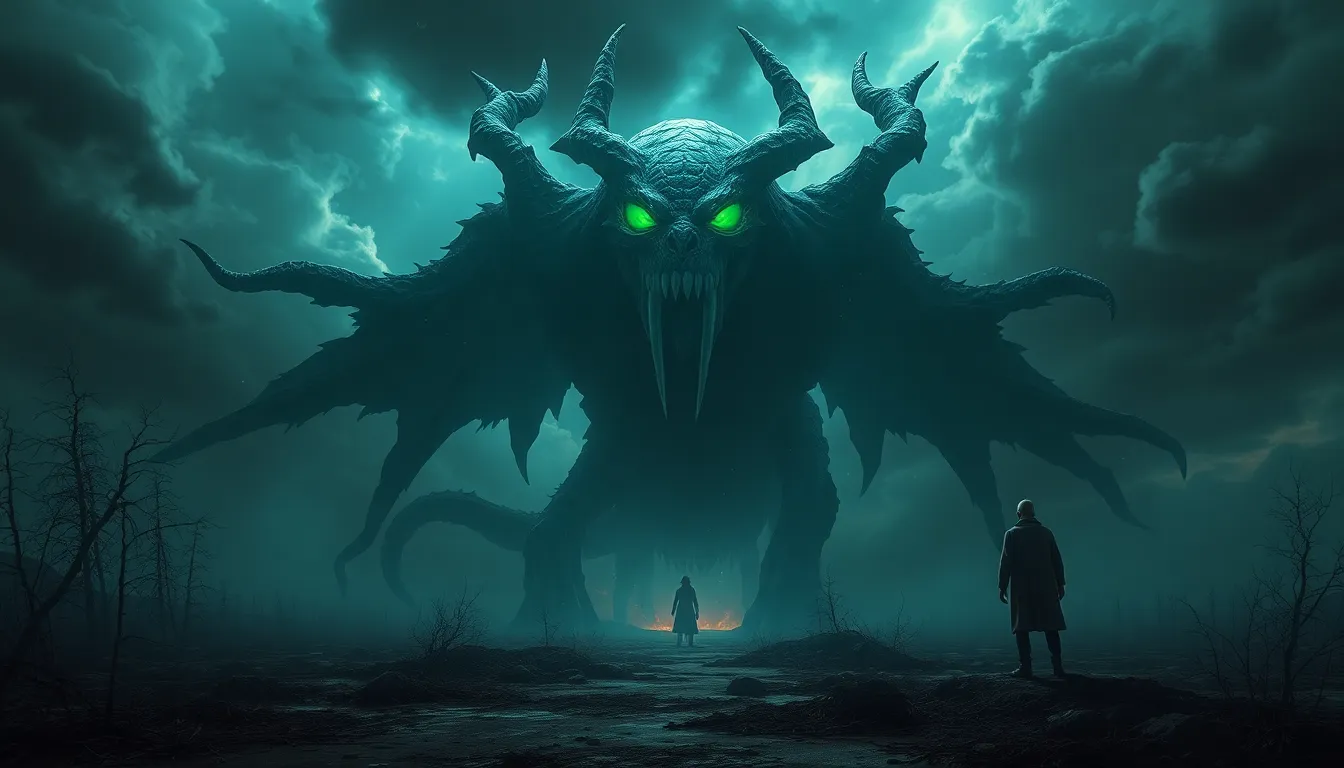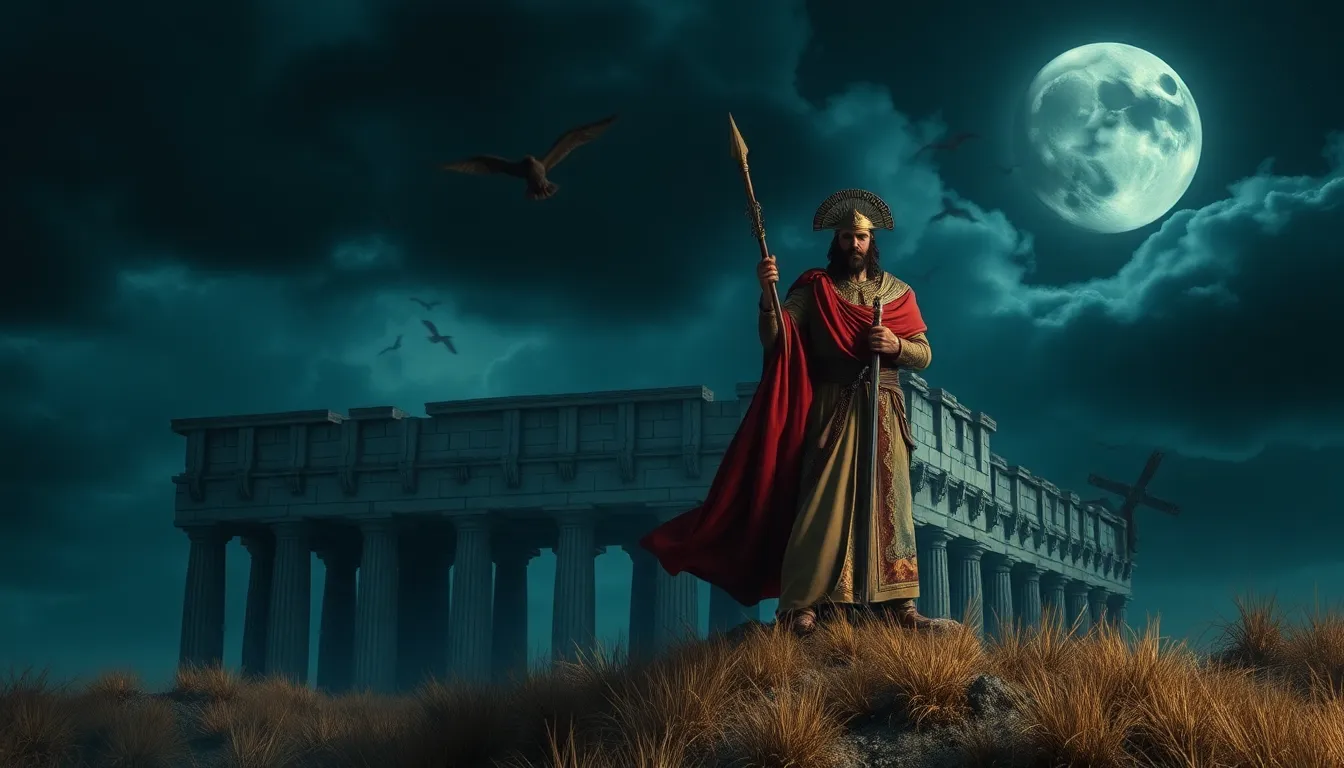The Aztec Underworld: A Journey to Mictlán
In the rich tapestry of Aztec mythology, the underworld, known as Mictlán, holds a prominent place. This realm of the dead was not a place of eternal torment but rather a complex and multifaceted landscape where the souls of the deceased embarked on a perilous journey. Mictlán was a place of shadows, a realm where the sun never shone. This realm was a place of constant darkness, where the only sounds were the whispers of the wind and the cries of the souls trapped there. Its existence was a testament to the cyclical nature of life and death, and it played a crucial role in the Aztec worldview.
The Four Suns and the Creation of the Underworld
According to Aztec mythology, the world we live in is the Fifth Sun. The previous four suns were destroyed by various cataclysmic events, each marking the end of an era. This recurring cycle of creation and destruction is a central theme in Aztec cosmology. It was during the end of the Fourth Sun that the gods, including Tezcatlipoca, the Smoking Mirror, and Quetzalcoatl, the Feathered Serpent, created Mictlán, the underworld. It was a place of darkness and shadow, a realm where the souls of those who died would journey.
Mictlán was not a place of eternal torment. Instead, it was seen as a place of rest and reflection, where the souls of the dead would spend eternity. This journey was not easy, and the souls of the dead had to face many challenges and trials. The Aztec believed that the souls of the dead would journey to Mictlán through a series of tunnels and caves, each guarded by a different god or goddess.
The Layers of Mictlán: A Descent into Darkness
Mictlán was not a singular realm but a complex underworld with nine distinct levels, each more challenging than the last. Each layer presented a different obstacle or trial that the souls of the dead had to overcome. These layers were filled with fearsome and mysterious creatures as well as the spirits of those who had died in different ways. The Aztec believed that the souls of those who died in battle or childbirth were granted special status and did not have to endure the trials of Mictlán.
The first layer of Mictlán was a place of hunger and thirst. The second layer was a place of wind and cold, where souls were tormented by the relentless sting of the wind. The third layer was a place of fire and thorns, where souls were forced to walk across a field of burning thorns. The fourth layer was a place of water and rivers, where souls had to cross a river of blood. The fifth layer was a place of darkness and shadows, where souls were confronted by their own fears. The sixth layer was a place of disease and illness, where souls were haunted by the spirits of those who died from disease. The seventh layer was a place of mountains and valleys, where souls had to climb treacherous mountains. The eighth layer was a place of ice and snow, where souls were frozen in a state of eternal winter. The ninth layer, the heart of Mictlán, was where the souls of the deceased would finally find rest and peace.
The Trials of the Dead: Facing the Guardians of Mictlán
The process of traversing through Mictlán was not a simple walk. Each layer was guarded by a different deity, each demanding its own unique challenge. These entities were not malevolent, but their trials were meant to test the souls of the deceased. The souls were required to navigate through dangerous landscapes, solve riddles, or perform difficult tasks. Those who failed to meet the challenges could end up being trapped in Mictlán for eternity.
The first guardian, for example, was a fearsome dog named Xoloitzcuintli. This creature would decide if the souls of the dead were worthy of entering Mictlán. The deceased soul needed to prove their worthiness by answering a series of riddles posed by Xoloitzcuintli. This dog would lead the soul toward the heart of Mictlán, where they would face the most formidable guardian of all, Mictlantecuhtli, the Lord of the Dead.
The Role of Mictlantecuhtli: The Lord of the Dead
Mictlantecuhtli, the ruler of Mictlán, was a powerful god and a figure of both fear and respect in Aztec mythology. He was the embodiment of death and the underworld. He was also a god of the night, the north, and the winter. His appearance was often depicted as a fearsome figure with a skeletal face and a skull-shaped crown. Mictlantecuhtli resided within the ninth level of Mictlán. His was a place of shadows, where the souls of the dead would be judged and their fate decided. He was a powerful deity who decided the fate of all who entered Mictlán. The souls of the dead had to pay their respects to him, and those who failed to do so would suffer eternal torment.
The Significance of Sacrifice: Providing Sustenance to the Underworld
In the Aztec world, human sacrifice played a vital role in maintaining the cosmic balance. The Aztec people believed that the gods required nourishment, and the blood of humans was the most potent offering. Sacrificial offerings were not simply acts of cruelty but were seen as a way to appease the gods to ensure the sun’s rise, good harvests, and the prosperity of the people.
The Aztec believed that the blood of sacrificed victims sustained the gods and provided nourishment for the underworld. This belief was particularly significant in the context of Mictlán. The souls of the dead needed nourishment to make their journey through the nine levels of Mictlán and to sustain themselves in the afterlife. It was believed that the blood of sacrificed victims provided this sustenance. This sacrifice served to maintain the balance of the cosmos by ensuring the continuity of life and death, a key aspect of the Aztec worldview.
Journey to Mictlán: The Path of the Dead
The Aztec believed that upon death, the soul embarked on a long and arduous journey to Mictlán. The path to Mictlán was a dangerous and uncertain journey, fraught with obstacles and challenges. The deceased soul’s journey began with a shaman guiding the soul through a cave in the earth, where they would then face the challenges of the underworld for four years.
The soul first crossed a river, encountering the first of many dangers. The soul was expected to cross the river with the help of a mythical dog known as Xoloitzcuintli, or hairless dog. They then journeyed through a series of tunnels, each guarded by a different deity. Each level of Mictlán was treacherous and demanding, requiring a combination of strength, cunning, and resourcefulness to navigate. They would often be tested by the guardians of each level, who would challenge them with riddles or physical trials.
The Souls of the Dead: Their Fate in Mictlán
In the Aztec belief system, death was not the end but a transition to a different realm. The souls of the dead would find their final resting place in Mictlán, a realm of shadows and eternity. According to Aztec beliefs, Mictlán was not a place of punishment, but a place of rest and reflection for the souls of the dead. However, it was not a realm without rules and consequences.
Their fate in Mictlán depended on how they lived their lives and how they navigated the challenges of their journey to Mictlán. The souls of those who died in battle or childbirth were believed to have a special status in Mictlán. The warriors were believed to be welcomed into the realm of the sun god, Huitzilopochtli, while the mothers who died in childbirth were honored as goddesses. However, those who died by illness or disease faced a more challenging journey through the underworld, requiring them to face the harsh trials of Mictlán.
Theories on the Origins of the Aztec Underworld
The origins of the Aztec underworld, Mictlán, remain an area of ongoing debate and speculation among scholars. There are several theories regarding its origins, each offering a different perspective on its development and significance within Aztec culture. The Aztec migrated from northern Mexico to central Mexico, incorporating elements of the cultures they encountered along the way. These influences likely shaped their beliefs about death and the afterlife, ultimately contributing to the development of Mictlán.
One theory suggests that Mictlán was influenced by the Toltecs, a civilization that preceded the Aztecs in central Mexico. The Toltecs had a similar concept of a complex underworld with different levels and guardians. Another theory points to the influence of Mesoamerican cultures, such as the Olmec and Maya, which also had beliefs about death and the afterlife. These cultures also had a concept of the underworld. These diverse influences may have contributed to the unique cultural and religious tapestry that characterized Aztec cosmology.
The Impact of the Aztec Underworld on Modern Culture
The Aztec underworld, Mictlán, has been a source of fascination for people around the world. It has been depicted in literature, art, and film, inspiring countless stories and interpretations. The Aztec underworld has inspired stories and artwork, providing a glimpse into this complex and fascinating belief system.
The themes of darkness, death, and sacrifice that are central to the concept of Mictlán have resonated with artists and writers across different cultures. These themes have inspired countless works of art, literature, and music, reflecting the enduring power of the Aztec worldview. Even today, the Aztec underworld continues to fascinate and intrigue people, reminding us of the enduring power of mythology and the mysteries of the afterlife.
FAQ
1. What is Mictlán?
Mictlán is the Aztec underworld, a complex realm with nine distinct levels where the souls of the dead journeyed.
2. What is the purpose of human sacrifice in Aztec culture?
The Aztec believed that human sacrifice was necessary to provide sustenance for the gods and the underworld, ensuring the sun’s rise, good harvests, and prosperity for the people.
3. How many layers does Mictlán have?
Mictlán has nine distinct layers, each guarded by a different deity and with unique challenges that the souls of the dead must overcome.
4. Who is Mictlantecuhtli?
Mictlantecuhtli is the Lord of the Dead, ruling over Mictlán and determining the fate of the souls who enter his domain.
5. What is the significance of Xoloitzcuintli in the journey to Mictlán?
The Xoloitzcuintli, a hairless dog, is a mythical guide that leads the souls of the dead through the first part of their journey to Mictlán.
6. What are the different fates of the souls in Mictlán?
The fate of the souls in Mictlán depends on how they lived their lives and how they navigated the challenges of the journey. Some souls, such as those who died in battle or childbirth, are believed to have a special status in Mictlán, while others face challenges.
7. How does Mictlán impact modern culture?
Mictlán has captured the imagination of artists, writers, and filmmakers, inspiring countless stories, artwork, and interpretations, reflecting the enduring power of Aztec mythology and the mysteries of the afterlife.
8. What other cultures influenced the Aztec concept of the underworld?
The Aztec underworld is likely influenced by the Toltecs, a civilization that preceded the Aztecs, as well as other Mesoamerican cultures such as the Olmec and Maya who had their own belief systems about death and the afterlife.



